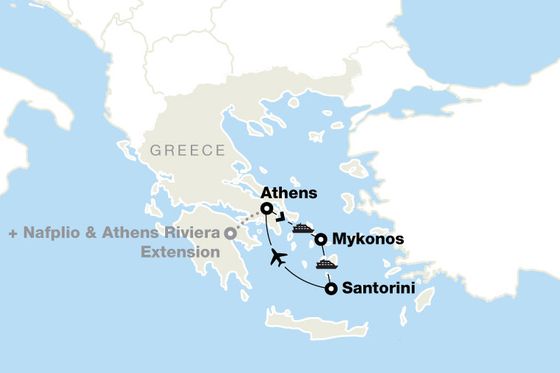
The ultimate Turkey Travel Guide
To help make your trip extra memorable, our ultimate Turkey Travel Guide has everything you need to know about this magical country.
Sitting pretty at the intersection of Europe and Asia, Turkey has an amazing array of Western and Eastern influences: Roman emperors and Ottoman sultans, the Mediterranean and the Middle East, the Balkans and the westernmost part of Asia. You’ll see evidence of Turkey’s diverse past in its culture, world-famous cuisine, and historical sites. Truly, the country offers something for everyone. And we haven’t even said anything about Istanbul, one of the world’s greatest cities!
Is it any wonder that affordable getaways to Turkey will be one of the biggest travel trends of 2022? To help make your trip extra memorable, our ultimate Turkey Travel Guide has everything you need to know about this magical country.
Find our team’s expert tips on the best things to do on our tours to Turkey!

Currency: The Turkish lira is the country’s official currency. However, some shops, hotels, and restaurants in popular areas, especially in Istanbul, accept euros or U.S. dollars.
Language: Turkish is the country’s official language. It might seem complicated at first, but its pronunciation is phonetic.
Getting around: On our Grand Tour of Turkey, a private motor coach will help you see as much of the country as possible. You’ll take the scenic sea route—a short ferry ride—from Istanbul to Troy, and take a quick flight from Cappadocia, in central Turkey, back to coastal Istanbul. In your free time, Turkey’s public transportation can take you wherever you want to go. To reach the country’s small towns and villages, take a dolmus, a minibus or van that carries passengers on set routes. You can hop on or off wherever, but don’t expect luxury or privacy—dolmus means “stuffed” in Turkish.
Phrases to know: “Tesekkür ederim” means “Thank you,” a useful phrase when appreciating the kindness of strangers. “Birsey degil” means “You’re welcome.”
You’ll probably want to know how to ask, “Do you know English?”: “Ingilizce biliyor musunuz?”
And for shopping, “Bu ne kadar” means, “How much is this?” (Though it might help to know how to count in Turkish, too!)

When to go to Turkey
The best time to visit Turkey probably isn’t in winter, which is cold and can be snowy. Hotels in certain areas are closed between November and March. That said, traveling during the off-season often means fewer crowds and lower prices. Summer in Turkey is hot and usually rain-free, and it’s peak season for travelers.
April and May are prime months for visiting Turkey. The weather is pleasantly balmy, warm but not too hot, and flowers are in bloom across the country. Fittingly, May 6 is when Turkey celebrates Hidrellez, a joyful festival of song and dance that marks the arrival of spring.
September and October are also great months for visiting Turkey. The warmth of summer still lingers, but the biggest crowds have gone home, leaving Turkey peaceful and picturesque. We’re predicting that shoulder-season travel will be one of the top group-travel trends this year, so plan a trip to Turkey before it gets too popular!
What to pack for a trip to Turkey
Packing for a trip to Turkey means preparing for the unpredictable. But, as experienced travelers always say: There’s no bad weather, just bad preparation.
- A hat, sunscreen, and a reusable water bottle, because Turkey is often hot and sunny!
- Modest but lightweight clothes. You’re likely to see lots of travelers wearing t-shirts and shorts in Istanbul, but you’ll want more modest, skin-covering clothing, like long-sleeve shirts and pants, when outside Turkey’s colorful cultural capital.
- A pashmina shawl or scarf for visiting religious sites. You’ll need to cover your head in mosques and your bare shoulders in some churches.
- Comfortable walking shoes, because the best places to visit in Turkey are best explored on foot.

The best things to do in Turkey
Turkey offers such a wealth of sights and experiences that it’d be impossible to do everything on just one trip. “From the markets of Istanbul to the travertines of Pamukkale and all the way to the otherworldly rock formations of Cappadocia, every part of Turkey had new and interesting things to offer,” said Go Ahead traveler Chelsea. Still, there are some things to do in Turkey that you don’t want to miss.
- Ride a hot-air balloon over Cappadocia, a region in central Turkey known for its “fairy chimney” rock formations. These surreal natural spires, viewed from above, are among the most beautiful things to see in Turkey. “As the light filters across the horizon, you’ll float softly over a wonderland of rock chimneys, vineyards, and orchards,” said Go Ahead staffer Erin in our guide to eight bucket list experiences in Turkey.
- Walk around the Göreme Open-Air Museum, where hundreds of churches and frescoes have been carved into Cappadocia’s soft rock. You’ll see why Cappadocia is one of the best places to visit in Turkey.
- Relax in a hammam in Istanbul. Hammams are luxurious Turkish baths, or spas. “You’ll be treated like a king or queen for more than an hour in authentic steambath and will leave feeling cleaner than ever,” said Turkish Tour Director Suleyman in a Q&A about traveling in Turkey. “Everyone needs to try it at least once!”
- Explore the 4,000-year-old city of Troy. If you’re up on your classics, you might remember Troy as the location of the Trojan War in Homer’s Iliad. In fact, Troy is a legendary place that actually existed! With a UNESCO World Heritage designation, the ancient city is now considered one of the world’s most important archaeological sites.

- Visit the Blue Mosque, famous for its 20,000 blue Iznik tiles, six 210-foot-tall minarets, and 250 stained-glass windows. “The structure’s seamless blend of Christian, Byzantine, and Islamic Ottoman architecture makes it one of the most unique structures in the world,” Go Ahead staffer Erin writes.
- Visit the Hagia Sophia, which held the title of the world’s largest cathedral for nearly a millennium.
- Soak in Pamukkale’s ancient hot springs, one of the best things to do in Turkey that people have been doing since the time of Classical antiquity. It’s one of our eight bucket list experiences in Turkey. Pamukkale means “cotton castle” in Turkish, and the name is apt—its white limestone has been shaped into round, flowing terraces by calcite-rich springs over thousands of years.
- Stroll through Kaleiçi, the Old Town of seaside Antalya, one of the many places to visit in Turkey that’s alive with history. It’s hard to miss the district’s most significant relic, Hadrian’s Gate, which dates to 130 A.D. Kaleiçi is a kaleidoscope of rich history, with Ottoman-era houses, a two-millennia-old Roman harbor, and more.

- Shop in Istanbul’s Grand Bazaar, a labyrinthine sensory overload with thousands of shops. Don’t be afraid to bargain and to wander off the main streets without a plan—a sense of discovery is what makes the Bazaar so fun.
- Tour Dolmabahçe Palace, an extravagant historical landmark on the European side of Istanbul, if you have some free time before or after your tour. The jaw-dropping facts of the palace are enough to make you want to go: It has 285 rooms and 44 halls, and its ceilings are decorated with 14 tons of gold. Its crystal chandelier—the largest in the world—weighs more than four tons and was a gift from Queen Victoria of England.

What to eat and drink in Turkey
Needless to say, you won’t go hungry in Turkey. The country’s cuisine, a blend of Asian, Mediterranean, and Middle Eastern flavors, is mind-blowingly good—truly among the world’s best. Kebab is a Turkish standby, but there are so many gastronomic delights to explore.
- Mezzes are shared, small plates that help make meals in Turkey feel a little more social and casual. They’re often cold, and can include foods as varied as fava beans, stuffed vegetables, octopus, bulgur salad, and more. Sharing mezzes with friends is an authentic Turkish dining experience. That’s why the traditional Turkish meyhane (tavern) dinner on our Grand Tour of Turkey starts with mezze!
- Raki is a popular anise-flavored spirit that accompanies many meals. It’s typically served over ice with an added splash of water, which turns the clear liquor white and earns it its nickname, Lion’s Milk. Read more about raki in our guide to 48 hours in Istanbul →
- Gözleme and pide are popular street foods consisting of dough that’s filled with toppings (often ground meat, spices and herbs, and and feta cheese) and cooked until crispy. Gözleme is cooked over a griddle, while pide, sometimes called “Turkish pizza,” is baked in an oven.
- A Turkish wet burger might sound odd, but just picture a meatloaf combined with a classic American burger and smothered in steaming sauces and spices. Delicious! Go Ahead staffer and Istanbul native Ozi recommends getting one (or three) from Kızılkayalar in Istanbul’s Taksim Square. “You won’t believe how a food that looks that soggy could taste that good!” she said. “I ate four the first time, I am sure. No one ever eats just one wet burger and is done.”

- Simit is a “freshly baked, sesame-crusted bread dipped in molasses,” said Turkey Tour Director Suleyman. “Simit is widely available from street vendors everywhere and can be had with cheese or Nutella and other toppings for less than $1 or $2.”
- A classic Turkish breakfast can make the start to any day feel luxurious. Expect to be totally sated by the assortment of breads and pastries, jams and sauces, cheeses, eggs, yogurt, hot and cold meats, and fresh vegetables.
The best Turkish souvenirs
Your memories and pictures might be the most meaningful things to bring home from your trip to Turkey. But there are certain Turkish souvenirs that will make you or your loved ones think of Turkey often.

- Turkish rugs are one of the things the country is known for. They’re expensive when handmade, and many are too large to take on a plane, so try to bargain if you can, and be sure to work with a vendor who can ship your rug home for you.
- Baklava, the flaky, layered pastry, makes a sweet gift. It’s sold at most bakeries and sweet shops, but make sure you buy it freshly made, rather than the prepackaged supermarket kind.
- Dried fruit, such as apricots, figs, raisins, sour cherries, prunes, and mulberries, can be a tasty snack that reminds you of Turkey when you’re home. After trying dried fruit from a Turkish market, Go Ahead staffer Gen said, “The pineapple was just as tart as if it weren’t dried at all. I’ve never found anything close to this amazing at any grocery store.”
- A nazar amulet, recognizable by its concentric circles of cobalt, turquoise, and white with a black dot in the center, is said to ward off the evil eye. The talismans are made of glass and can be found at most gift shops.
























































































